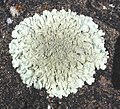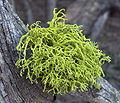
Parmelia is a genus of medium to large foliose lichens. It has a global distribution, extending from the Arctic to the Antarctic continent but concentrated in temperate regions. There are about 40 species in Parmelia. In recent decades, the once large genus Parmelia has been divided into a number of smaller genera according to thallus morphology and phylogenetic relatedness.

Allocetraria is a genus of lichenized fungi in the family Parmeliaceae. It consists of 12 species, with a center of distribution in China.

Arctocetraria is a genus of foliose lichens in the family Parmeliaceae. It has three species.

Cetrariella is a genus of foliose lichens in the family Parmeliaceae. It contains three species.
Cetreliopsis is a genus of four species of lichens in the family Parmeliaceae.

Masonhalea is a genus of two species of lichenized fungi in the family Parmeliaceae.
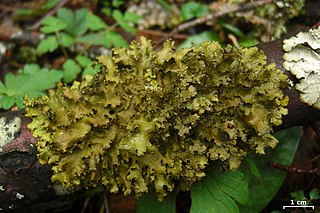
Tuckermannopsis is a genus of foliose lichens in the family Parmeliaceae.
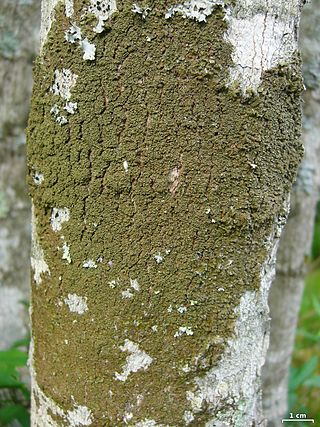
Melanohalea is a genus of foliose lichens in the family Parmeliaceae. It contains 30 mostly Northern Hemisphere species that grow on bark or on wood. The genus is characterised by the presence of pseudocyphellae, usually on warts or on the tips of isidia, a non-pored epicortex and a medulla containing depsidones or lacking secondary compounds. Melanohalea was circumscribed in 2004 as a segregate of the morphologically similar genus Melanelia.

Parmelina is a genus of lichen belonging to the family Parmeliaceae. The genus was circumscribed in 1974 by American lichenologist Mason Hale with Parmelina tiliacea assigned as the type species.

Punctelia is a genus of foliose lichens belonging to the large family Parmeliaceae. The genus, which contains about 50 species, was segregated from genus Parmelia in 1982. Characteristics that define Punctelia include the presence of hook-like to thread-like conidia, simple rhizines, and point-like pseudocyphellae. It is this last feature that is alluded to in the vernacular names speckled shield lichens or speckleback lichens.

Relicina is a genus of foliose lichens belonging to the large family Parmeliaceae. It contains 59 species.
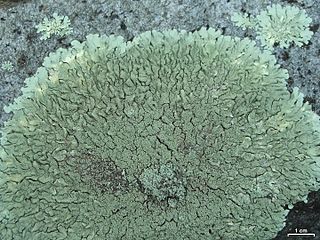
Xanthoparmelia is a genus of foliose lichen in the family Parmeliaceae. Xanthoparmelia is synonymous with Almbornia, Neofuscelia, Chondropsis, Namakwa, Paraparmelia, and Xanthomaculina. This genus of lichen is commonly found in the United States, as well as Australia, New Zealand and Ecuador.
Cetrariopsis is a genus of foliose lichens in the large family Parmeliaceae. The genus contains three species, including the type, Cetrariopsis wallichiana.
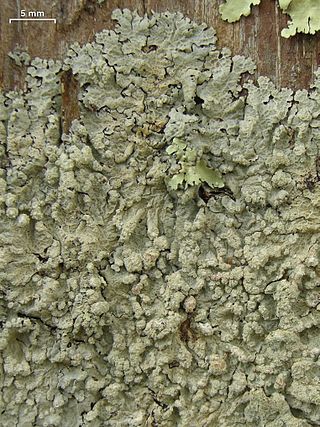
Crespoa is a genus of five species of lichen in the family Parmeliaceae. Species in this genus are characterized by having an upper thallus surface that is wrinkled and reticulately ridged to coarsely foveolate.
Remototrachyna is a genus of foliose lichens in the large family Parmeliaceae. It was separated from the genus Hypotrachyna based on the structure of the excipulum and genetic differences.
Emodomelanelia is a lichen genus in the family Parmeliaceae. It is monotypic, containing the single foliose Himalayan species Emodomelanelia masonii.

Notoparmelia is a genus of foliose lichens in the family Parmeliaceae. It includes 18 species that grow on bark and rocks, and are mostly distributed in the Southern Hemisphere. The genus was created in 2014 as a segregate of Parmelia.
Austromelanelixia is a genus of five species of foliose lichens in the family Parmeliaceae. All species are found in the Southern Hemisphere.








